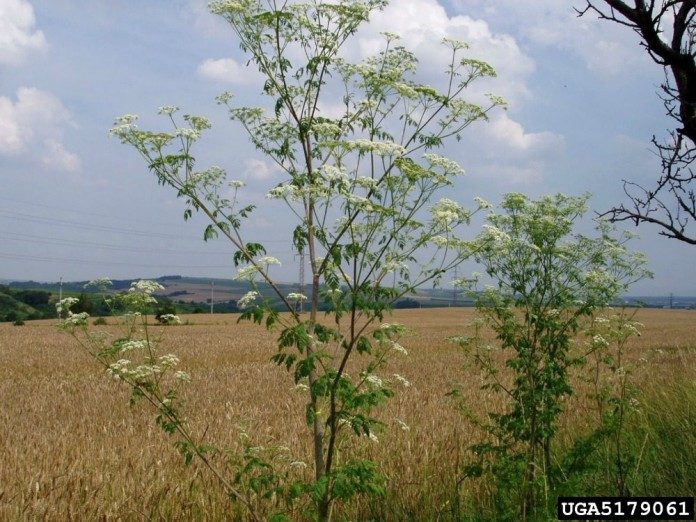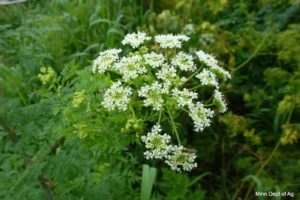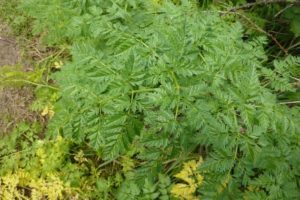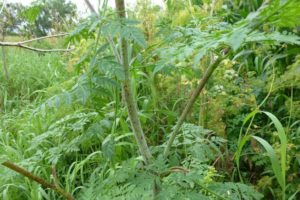
It is a safe bet that those of us that have spent time in the woods have run across Poison Ivy and Poison Oak and lived to tell the tale with little more than the now somewhat hilarious story of being covered in it and itching constantly.
But there is another plant in Minnesota people need to be aware of, and it’s much more dangerous; it can possibly kill a person, pet, or livestock if any part of the plant is ingested.
According to the Minnesota DNR page, poison hemlock is an invasive species that began as an ornamental plant native to Europe. It was introduced in North America sometimes during the 1800s as a garden plant, can grow anywhere from 3-8 feet tall, and, somewhat surprisingly, is a member of the carrot family; it has an odor that has been described as that of carrots, parsnip or fennel.
Which is why we have to be careful: It smells delicious.
And the only real dangers of hemlock come from ingestion. This 2015 article from foodsafetynews.com details cases of those who mistook poison hemlock for another edible plant; it really does closely resemble wild carrot (Queen Anne’s Lace). But all parts of the plant are indeed toxic, and even handling the plant has been known to have an adverse reaction in some people.
When ingested, hemlock attacks the nervous system, and can cause various symptoms: a burning sensation in the mouth, vomiting, confusion, seizures, and paralysis. Eventually, the poison in the plant causes respiratory paralysis and the patient dies.
And it is just as lethal for non-humans. Anyone who has owned a dog or cat knows it’s common for them to eat grass or other leafy plants. Livestock are another category of animal that can be affected if poison hemlock is near any pastures where they may graze.

The Minnesota DNR describes the plant as having small, white flowers with five petals clustered in umbels of three to six inches in diameter (pictured above). The plant will bloom from May until August.
The leaves are fern like in appearance and broadly triangular. From the the center stem, secondary stems will branch off and then have multiple leaves branching off of them (pictured below).

The stems of the poison hemlock will be hairless, hollow, have ridges and are marked with purple spots or mottles (pictured below).

It is recommenced that poison hemlock only be handled while gloves and long sleeves are being worn to avoid any kind of reaction. If the plant is ingested, contact the Poison Control Center at (800) 222-1222. The plant can be dug up by placing a shovel at least 1 to 2 inches below ground and then removing. If you find it on your property and do not want to deal with removing it yourself, can contact the Minnesota Department of Agriculture at their Arrest the Pest site.
Next time you’re out and about in the woods or near a prairie, keep your eyes peeled for white flowers, purple spotted stems, and a plant that may be towering over you at eight feet tall. If you do run across it, give it a wide berth and let the Minnesota Department of Agriculture know.
And whatever you do, don’t eat it.
















